

2018.11.30
H30年度山田道場WHAT'S GOING ON『Programming Boot Camp #4』
Facilitators; Kentaro Matsuura (2016 AGL student, Electrical & Electronic Engineering) and Junichiro Ueno, Masayuki Sasaki, Tomoaki, Koshi and Hiroya Kawase, Guild Works, Inc.
The 4th day of Programming bootcamp was held on November 17th with the facilitation of Mr. Ueno, Mr. Sasaki, Mr. Koshi and Mr. Kawase from Guild Works.
From this session, students gathered back with original teams and started developing their web service.
At the beginning, each team gave a brief presentation about the web service that they wanted to make and got feedback from other teams as well as facilitators.
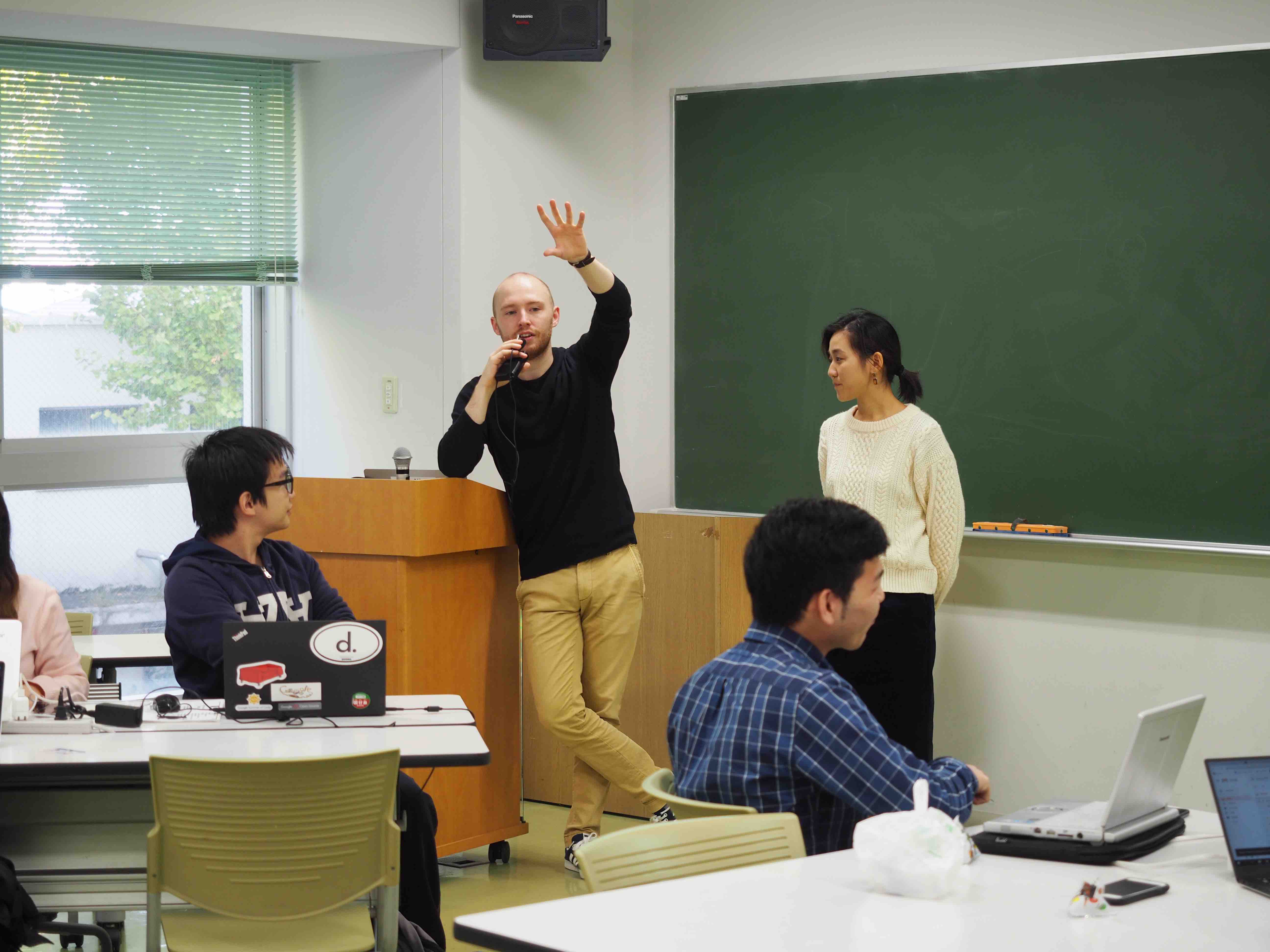
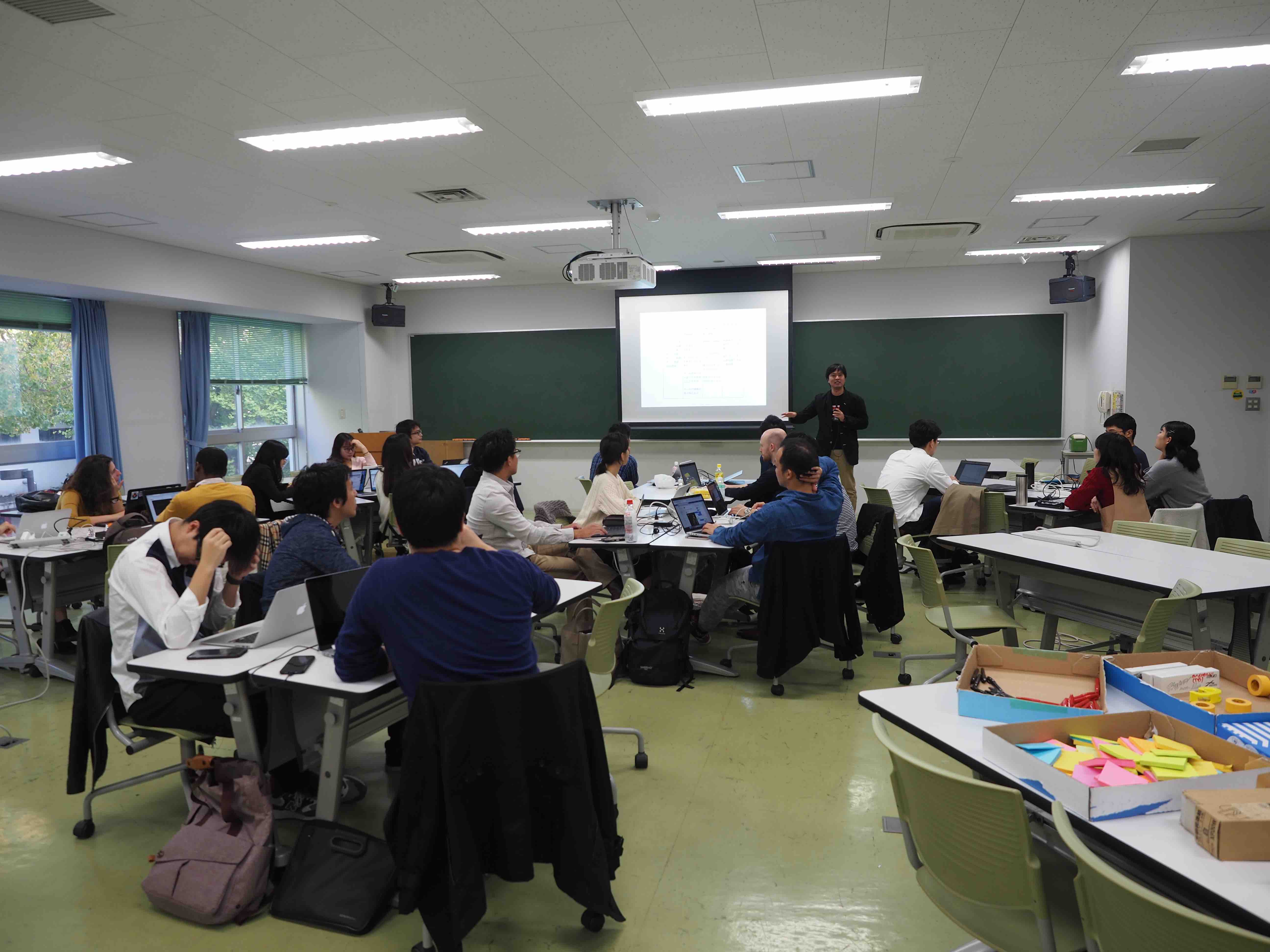
In the next part, Mr. Ueno provided a lecture about "Hypothesis Canvas", what it is, why we need it and how to make a good project canvas. From the lecture, writing a canvas is an important step at the beginning of the development process because it helps the whole team visualize their final service or expected output. In addition, constructing a hypothesis canvas helps promoting the communication between team members and stakeholders, therefore helps them realize users and how useful the service is. A detailed canvas covers many aspects including purpose, vision, solution, advantages, key metrics, value proposition, problems, alternative means, channel, customer situation and trend.
Based on the canvas introduction, each team tried to make their first canvas considering these contents: Purpose (why we want to develop this service?), Vision (what we want customers to do?), Customer situation, Problem (which issues customers realize?), Value proposition (what values we provide customers?) and Solution (what methods/tools can help us provide those values to customers?). After answering these contents, teams presented their "Business Model Canvas" in front of other teams and facilitators and got feedback.
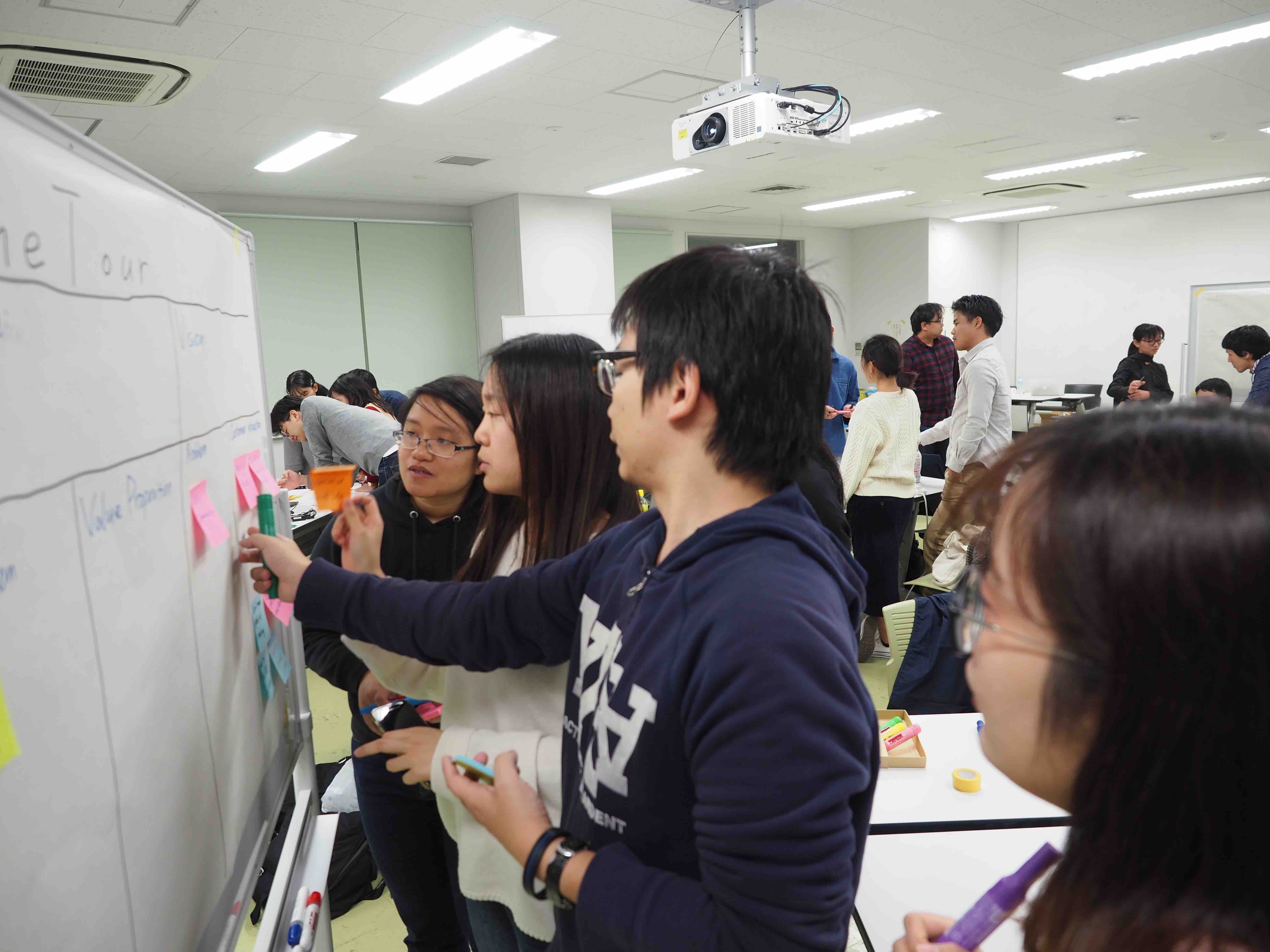
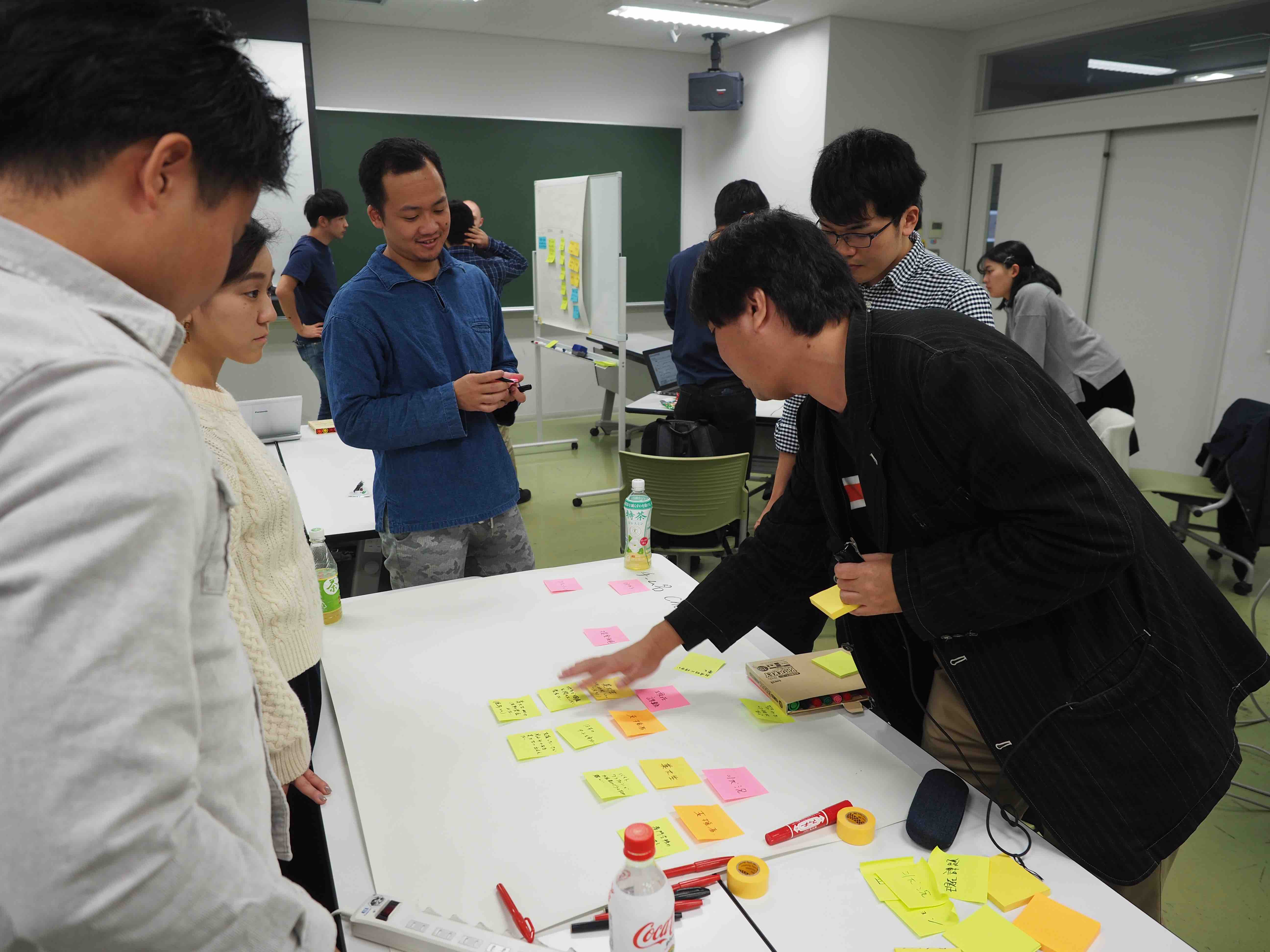
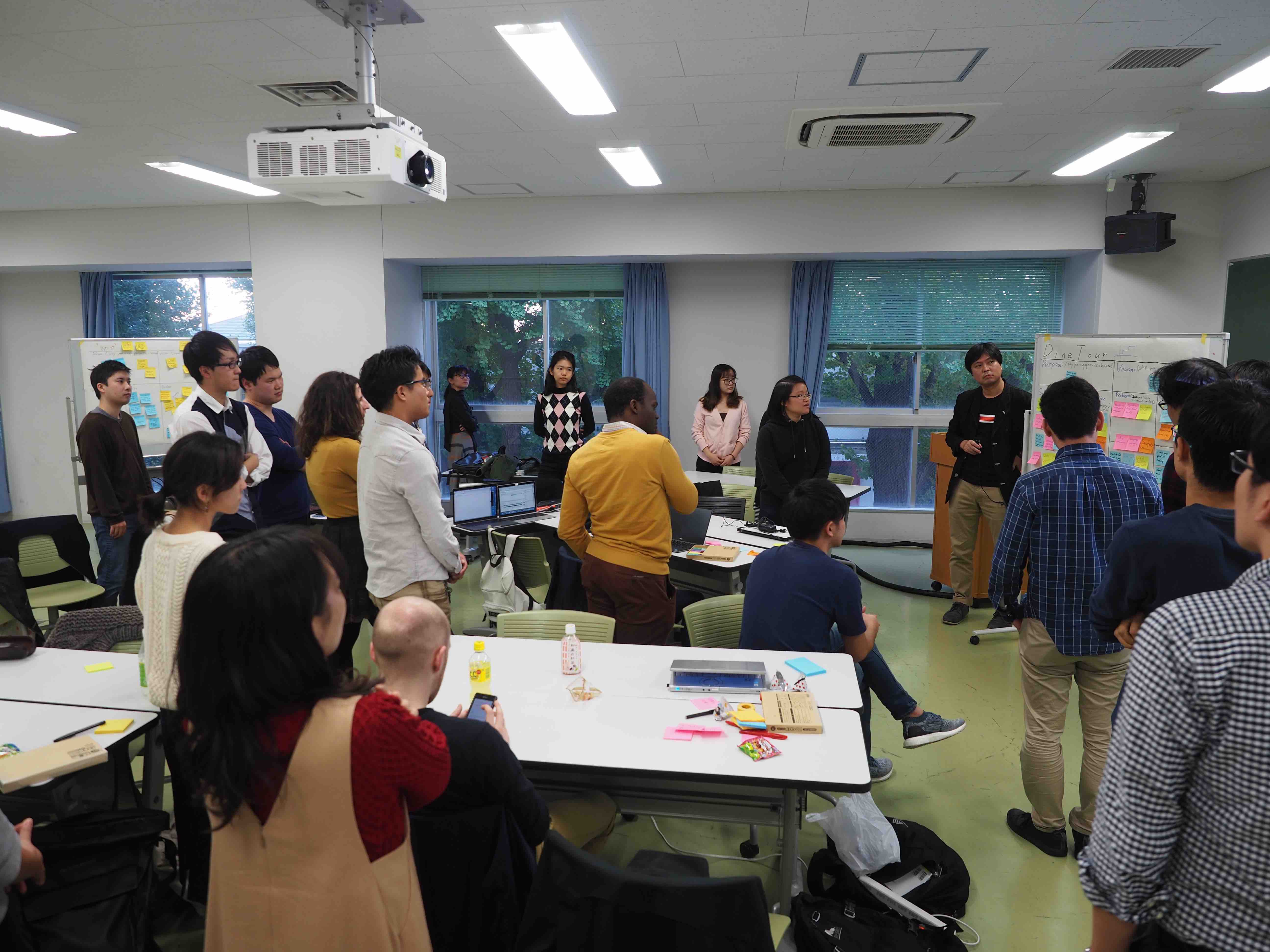
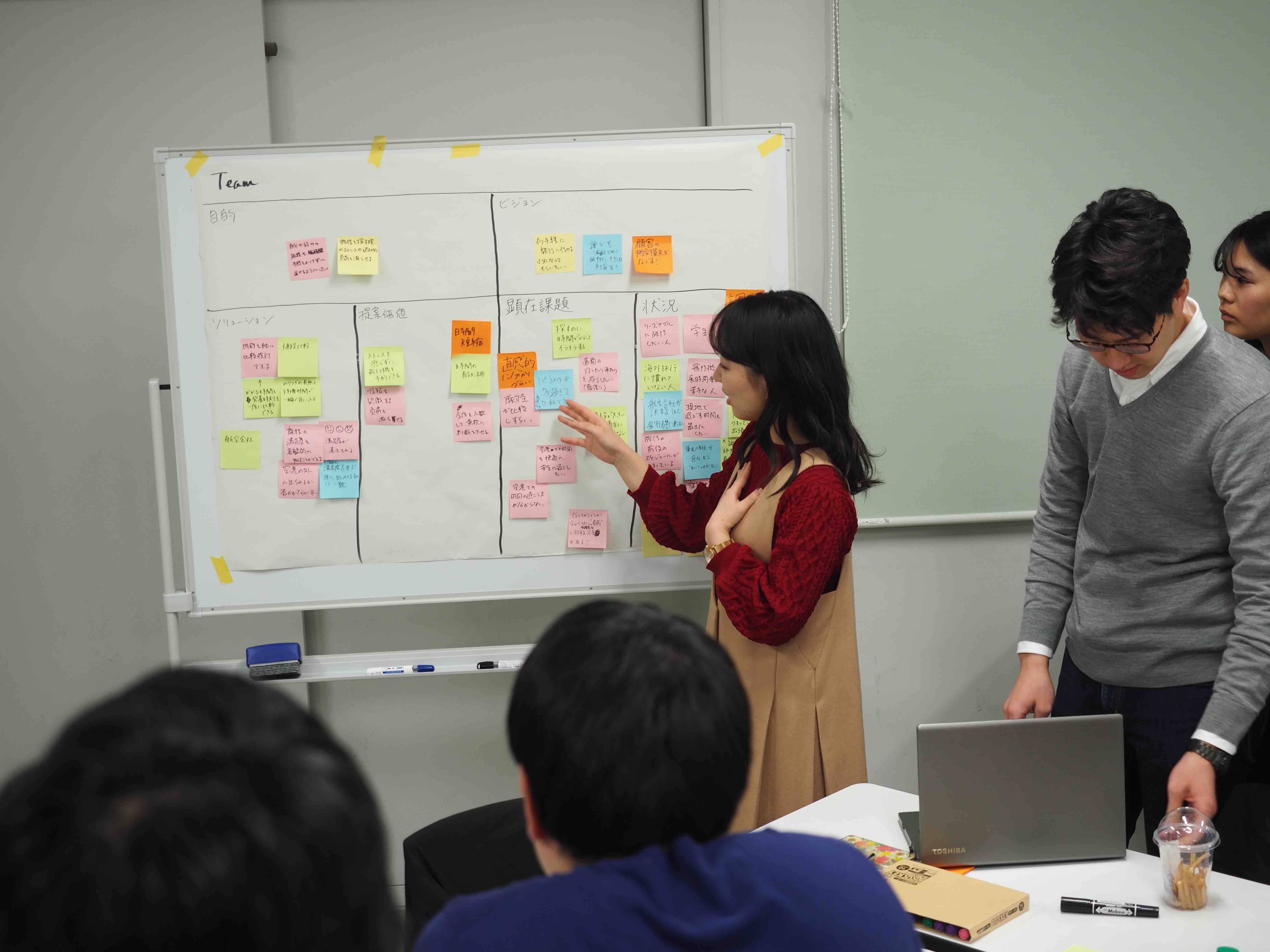
In the latter part, Mr. Sasaki explained about story boarding and let teams practice making their own story board. After making canvas, this following step is to help the team identify necessary screens and make sure if the service can be used by users. The story board is made by sketching different screens of the service and put them in a flow that users can follow.
After story boarding's talk, each team started making their story board with different sketched scenes of their service. Then team members try to check the flow themselves and fixed the sketches if they find any missing points. A team member from the role of a user looked at the team's web service and evaluated the usage. After the self-check, members from different teams come to each other's to cross-checked others' storyboards. This activity helped teams realize their limitations any apply some possible modification.
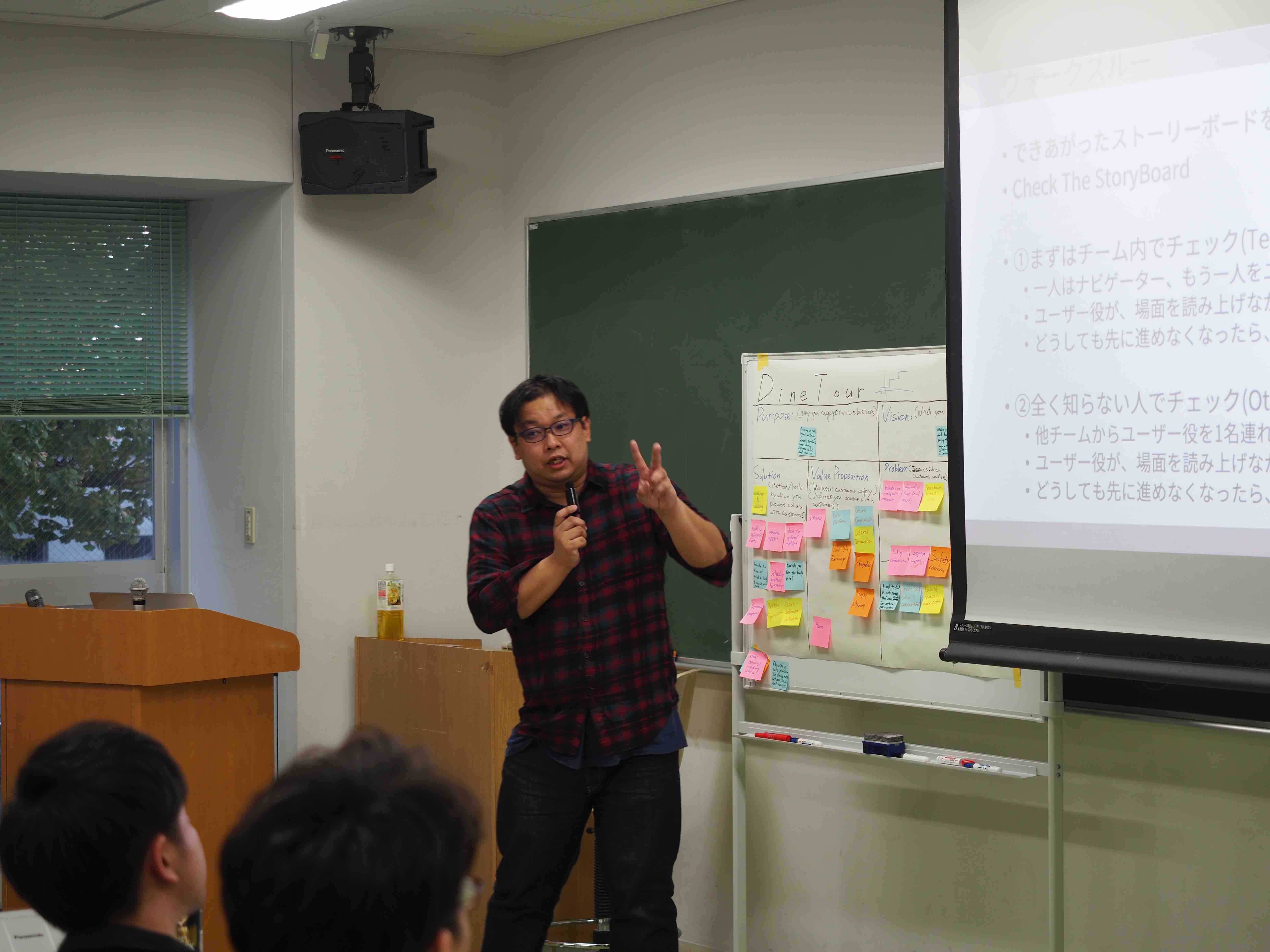
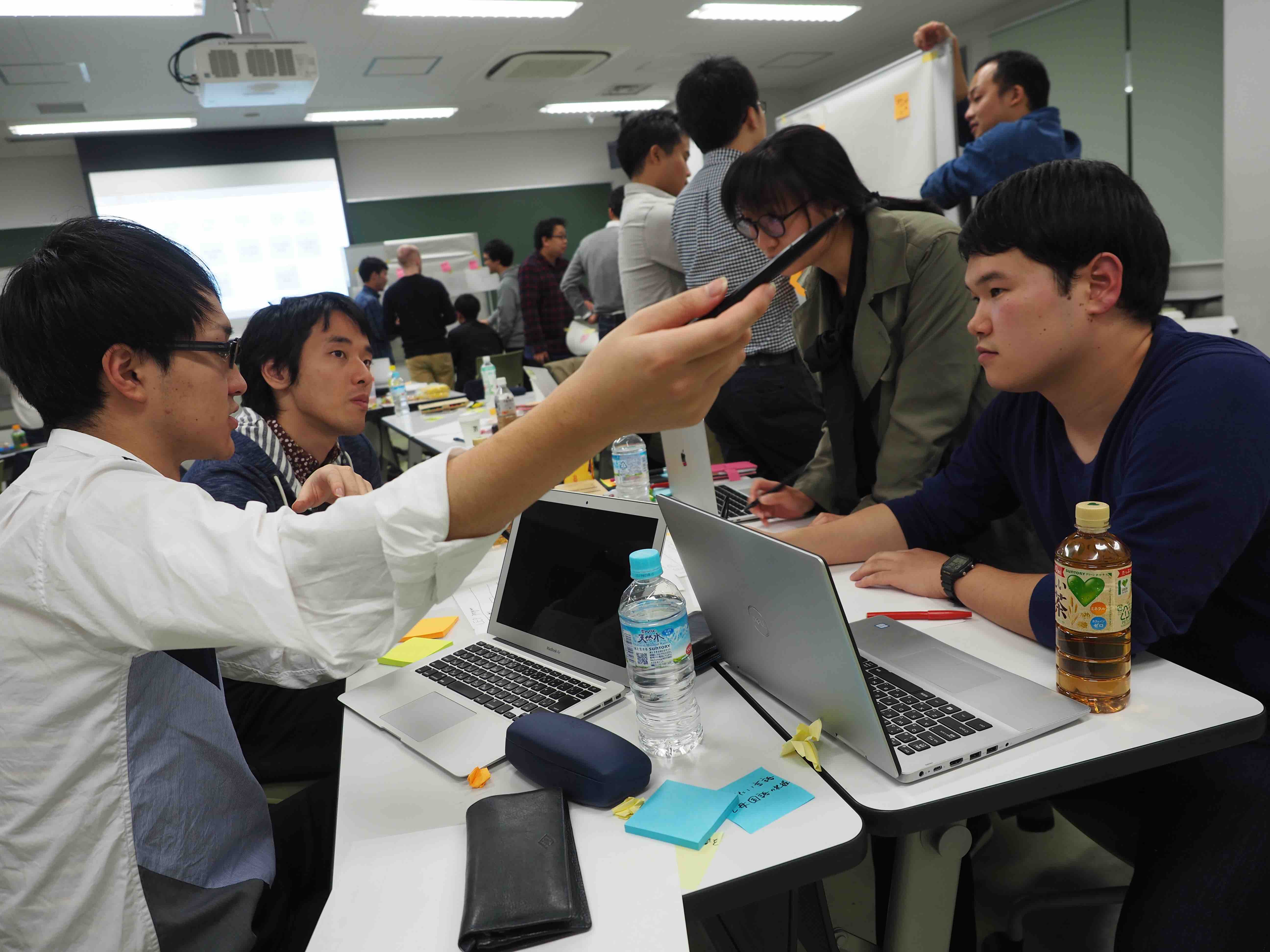
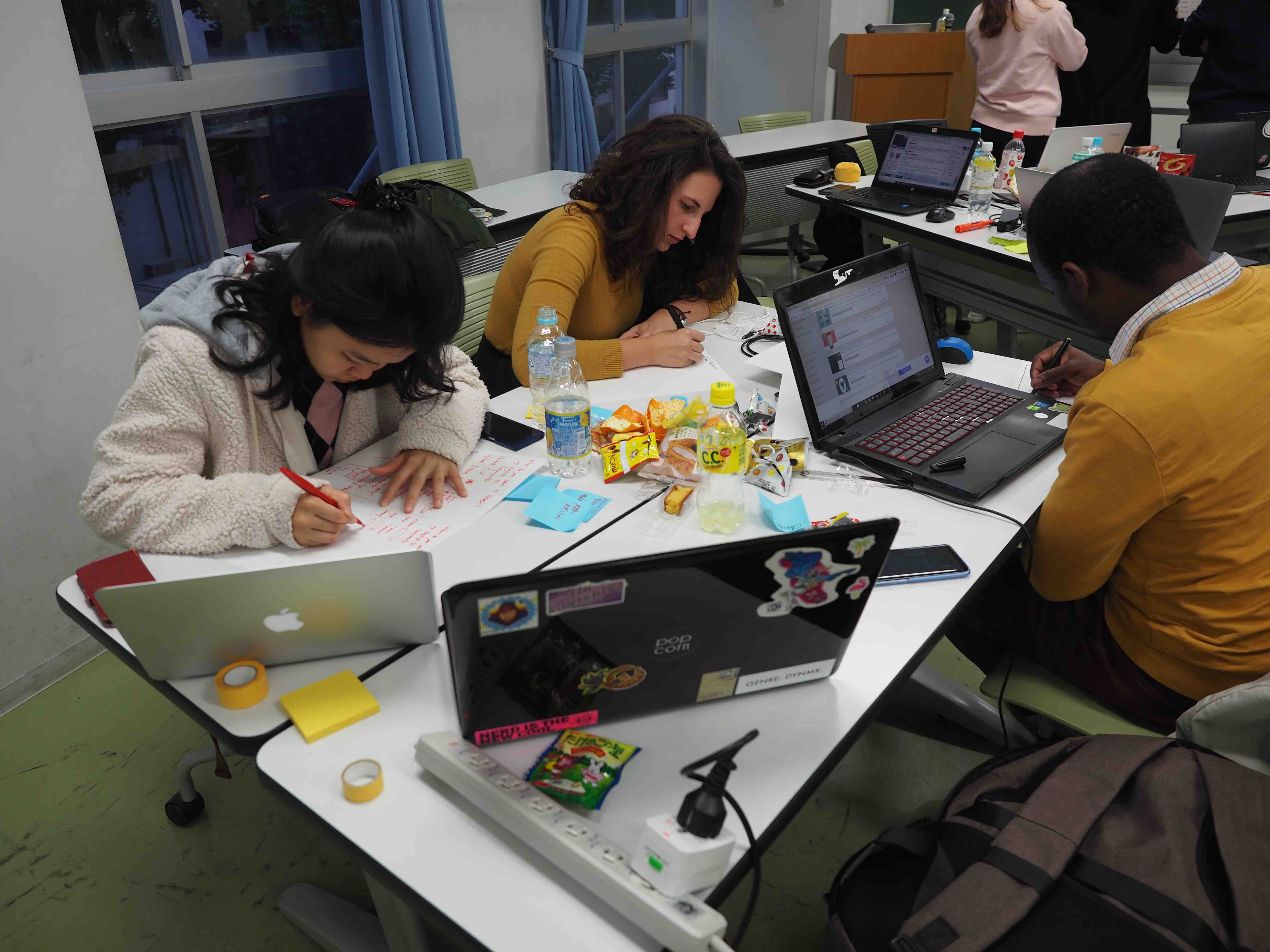
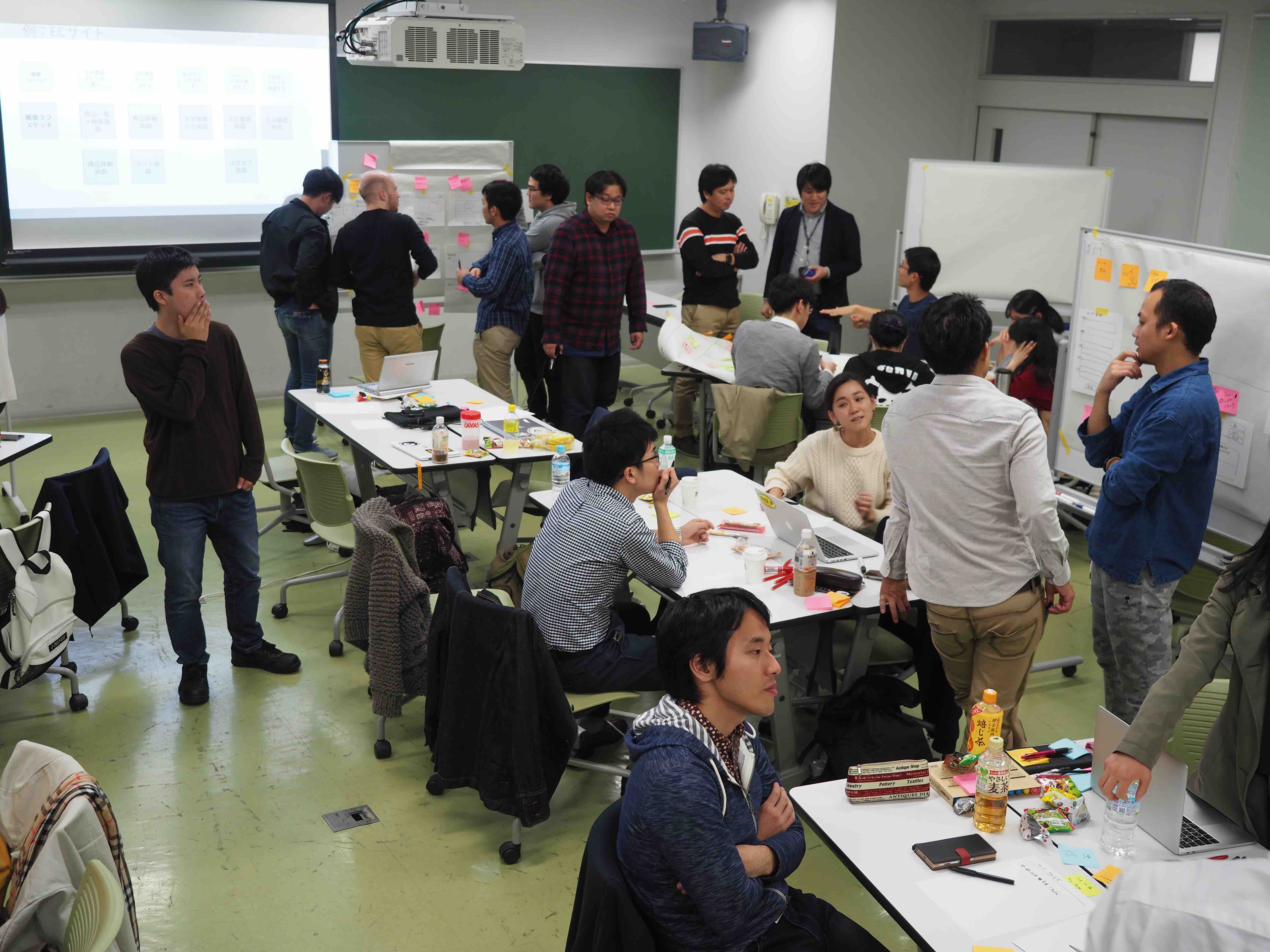
The final activity was questions and answers between teams and facilitators from Guild Works.
The nest round will be held on 30/Nov.
(Nguyen Anh Hoang Ngoc, 2018 AGL Student, Information and Communications Engineering)









